AAQEP Accreditation
Standard 1 Aspect F
Standard 1f: Evidence shows that, by the time of program completion, candidates exhibit knowledge, skills, and abilities of professional educators appropriate to their target credential or degree, including: Dispositions and behaviors required for successful professional practice.
Data Sources & Analysis
Data Source 1
Pre and Post Dispositions Survey
Description of Data Source:
Complementing the 23 CSU Completer Exit Survey of graduates, the Pre-Post Dispositions
Survey is administered at the beginning and end of each fieldwork course (EHD 178
and EHD 170). The California Commission on Teacher Credentialing (CCTC) requires all
candidates to demonstrate personality and character traits that satisfy the standards
of the teaching profession through a 9-item measure of these traits. Thus, Fresno
State developed this Teacher Commitment Statement consisting of six professional dispositions
teacher candidates complete as part of their entrance requirements and when they complete
their credential program.
Perspective Captured from Data Source: Teacher Candidates
Rationale for Using Data Source:
The Pre/Post Disposition Survey measures Professional Commitments and Dispositions
for the Multiple Subject Credential Program. Our program is committed to developing
teachers who have a command of the content in their field, who will be reflective,
collaborative professionals for our schools, and who are prepared to meet the challenges
and opportunities of working with culturally and linguistically diverse communities.
Our program fosters the development of the following six professional dispositions
among candidates. Our goal is for our candidates to increasingly reflect these dispositions
in their work with students, families, and communities.
- Reflection
- Critical thinking
- Professional ethics
- Valuing diversity
- Collaboration
- Life-long learning
Specific Elements of Data Source:
We chose the domain of professional ethics consisting of four items for our specific
data source: 1) Recognizes the importance of consulting research to inform instruction
for students with special needs; 2) Shows commitment to ethical conduct: turns in
assignments on time, is punctual and reliable in attendance, maintains professional
appearance; 3) Utilizes positive behavioral supports when managing student behavior;
and 4) Actively advocates for students and encourages student self-advocacy. Such
data represents the ways in which preservice teachers viewed their knowledge, skills,
and behaviors with professional ethics.
Definition of Success for Each Element:
Programmatically, our goal is for 80% or more of the teacher candidates to self-report
satisfactory or exceptional application of each item in the professional ethical domain
on the post-survey. We would also like to see collective improvement from satisfactory
to exceptional application of each item in the professional ethical domain from pre
to post administration of the survey.
Displays of Analyzed Data:
Figure 1: Pre-Disposition Survey completed at the beginning of Phase 1
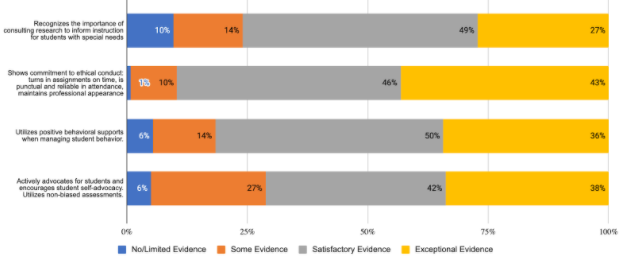
Figure 2: Post-Disposition Survey completed at the end of Phase 1
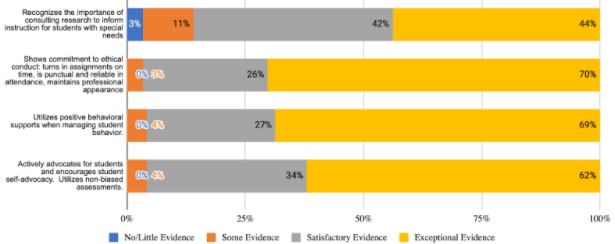
Link to Full Dataset:
Interpretation of Data:
The program goal of 80% or more of the teacher candidates demonstrating satisfactory
or exceptional application of each item in the professional ethical domain on the
post-survey. The greatest improvement was demonstrated pre-post in the candidates’
professional disposition of recognizing the importance of consulting research to inform
instruction for students with special needs. The goal of more teacher candidates self-reporting
exceptional application of all items in the professional ethical domain from pre to
post was also met indicating that the teacher candidates were able to demonstrate
growth in this disposition.
Data Source 2
Sample Narrative Community Context Assignment
Description of Data Source:
For this assignment, teacher candidates conducted a thorough examination of the community,
the school, and the specific classroom in which they are completing their fieldwork.
Teacher candidates are required to research the community in which they serve to better
understand and support the students in the classroom in which they complete their
fieldwork experience. Candidates are also required to develop an understanding of
the school in which they work, the intricacies of the school, the demographics of
the school, as well as the aspects that make the school special. Finally, teacher
candidates get to know the students in their classroom on a deeper level, and determine
how to best meet the needs of all of their students. Students are instructed to use
asset-based perspectives when referring to each aspect of the context.
Perspective Captured from Data Source: Program Faculty
Rationale for Using Data Source:
To examine our progress in preparing candidates to create and develop professional
dispositions and behaviors we pulled assignments from across the program across three
phases (semesters).
The assignments submitted by every student in the second and third phase of their multiple subject credential are evaluated by faculty who teach in our inquiry and puzzles of practice three course series. Data was taken from student work samples across three cohorts. Two cohorts were recorded in their second and third phases.
Our goal is for our students to demonstrate professional ethics and dispositions characterized by empathy and equity through these assignments as measured by their use of asset-based language over time.
Definition of Success for Each Element:
Our goal on the Community Context Assignments is for all students to demonstrate an
asset-based or strengths driven perspective (Green & Haines, 2011) by leveraging knowledge
of specific cultural capital that students, families, and communities contribute to
the classroom and community (Yosso, 2005). It is our program’s goal to have our teacher
candidates use more asset based language over time.
Asset vs. Deficit Orientation Toward Learners, Families, and Communities
The following tables represent data collected from a Community Context Assignment
submitted in one of two course sections, Inquiry and Puzzles of Practice B (iPOPb)
and Inquiry and Puzzles of Practice C (iPOPc). iPOPb is a second semester course;
iPOPc is a third semester course. Table 1 represents data collected from randomly
selected students artifacts from two cohorts across two semesters, t1 and t2. Data
was coded as either asset- or deficit-based orientation toward learners, families,
and communities.
Table 1: Comparison of t1 (iPOPb) and t2 (iPOPc) orientations toward learners, families, and communities (n10)
| Cohort | Time | Asset | Deficit |
|---|---|---|---|
| 1 | t1 | 15 | 4 |
| t2 | 7 | 2 | |
| 2 | t1 | 8 | 4 |
| t2 | 19 | 7 |
Figure 3 represents data collected from 30 student artifacts across six cohorts. Data was coded for student orientation toward cultural capital (Yosso, 2005).
Figure 3: Teacher candidate orientation toward cultural capital (n30)
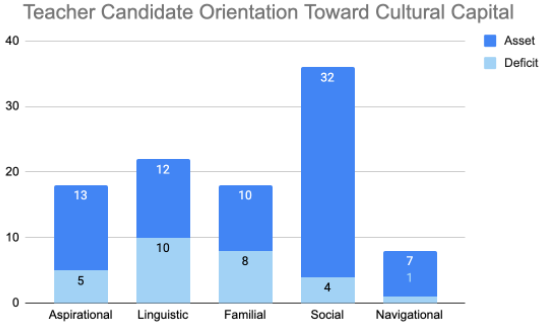
Interpretation of Data:
Asset vs. Deficit Orientation Toward Learners, Families, and Communities
Analysis of Table 1 indicates that students develop in their use of asset-based language over time. We find the use of a deficit orientation toward learners, their families, or communities decreases over time, consistent with intentional curriculum designed to facilitate critical conversations in coursework and discussion. In some cases, students were seen to limit their use of subjective statements altogether, indicating data-driven specificity in their work.
Analysis of Table 2 indicates teacher candidate perceptions of community wealth (Yosso, 2005). Of the 30 teacher candidate artifacts, there were 13 mentions of aspirational assets indicating teacher candidate beliefs that learners' future outcomes are positive despite real or perceived barriers. This is in contrast with 7 deficit orientations toward aspirational assets indicating some teacher candidates perceived learner lived experiences as being detrimental to their future outcomes.
Of the 30 teacher candidate artifacts, linguistic wealth was mentioned 12 times as an asset to student experiences and lives. Conversely, there were 10 mentions of language being a barrier to positive student outcomes. This indicates an increased need to address the divided perception centered around second language learners in classrooms and communities.
Familial wealth was also indicated in some student artifacts and appeared to be nearly divided in terms of asset and deficit orientations toward families and the contributions that cultural knowledge contributes to classroom environments and student outcomes. Of the 18 times that familial themes were mentioned, 8 were deficit-orientations toward familial and cultural wealth, compared to 10 that viewed familial and cultural influences as assets in the classroom.
Social wealth and the resources available to provide instrumental and social-emotional support for learners was mentioned more times than any other theme. This indicates the teacher candidate’s perception that there are numerous resources on school sites and within communities that contribute to positive student outcomes. Social wealth was mentioned 32 times throughout the community context assignments. This data can be interpreted in a number of ways: 1) the community context assignment included specific instructions oriented toward assets available on school sites, including clubs, extracurricular activities, programmatic focus, and resources centered around behavior management systems and social-emotional supports. 2) It can be interpreted that teacher candidates newly enrolled in a clinical placement have positive attitudes toward the school sites as they learn more about what schools have to offer. 3) It can be inferred that teacher candidates may view the schools as the mechanism through which children succeed. While this may be considered a positive orientation, as compared to familial and linguistic wealth, there may be missed opportunities for teacher candidates to fully invest or leverage the unique cultural identities and lived experiences that children bring to the classroom. 4) Specific instruction on the community context assignment may not ask teacher candidates to fully evaluate student lived experiences and unique familial and cultural influences. This indicates a need for additional support in this area.
Orientations toward Navigational Wealth, or the ways in which students of underrepresented communities navigate institutional experiences, was mentioned 8 times across 30 artifacts, with only one deficit orientation. This indicates a need to direct more attention to this area.
Next Steps:
Student Perceptions:
Based on our analysis, we find that student perception toward their own skill development
in relation to diverse practices increases over time from the beginning of the semester
to the end. We would like to maintain the perception that 80% or more of the students
find their preparedness at least satisfactory or exceptional across all objectives.
In order to achieve this objective we will focus on increasing the number of perceptions
of exceptional preparedness in the area of skill development as it relates to diverse
practices by centering lesson planning objectives and clinical experiences around
these concepts.
Asset vs. Deficit Orientation Toward Learners:
We believe that an earlier emphasis centered around student orientations toward learners
is necessary in order to facilitate teacher candidate intentional reflection on the
assets that learners contribute to classroom communities and instructional design.
While the curriculum is designed in the first phase of the program to facilitate discussions
around children, families, and communities, a more specific emphasis will be placed
on the use of language and perceptions and how that will influence teacher candidate
engagement in the Community Context Assignment. Linguistic and Familial Wealth discussions
and explicit instruction should be included in the Community Context assignment as
a way to help students center the lived experiences of learners; this will influence
the teacher candidate’s development and understanding around these important community
concepts and how that may influence student outcomes and success. More work should
include discussions around navigational wealth found in underrepresented communities;
this should be included in the Community Context Assignment.
Data Source 3
CSU Educator Quality Center Completer Survey
Description of Data Source:
Every year the CSU Educator Quality Center administers a survey to CSU teacher preparation
program completers at the time they complete their program. The routine, annual collection
of these data offer the program to look at Multiple Subject Program Completer perceptions
of preparedness longitudinally. Overall this survey tool aims to capture their perceptions
of preparation, and to measure their confidence in career placement and success. The
survey is aligned with the California Teaching Performance Expectations, serving as
a guide to the curriculum and clinical experiences of the Multiple Subject Credential
Program. This survey reports important insight into how our graduates’ perceive their
level of preparedness resulting from completing our program.
Perspective Captured from Data Source: Completers
Rationale for Using Data Source:
The third measure we used to evaluate candidates’ behaviors and dispositions of professional
educators included six items from the CSU Educator Quality Center’s Completion Survey
that aligned with Domain 6 of the Teaching Performance Expectations (TPEs): Developing
as a Professional Educator. We appreciated the way this measure complemented the disposition
surveys because it provides candidates’ perspectives on their preparation.
We chose to analyze disaggregated data from the past three cohorts of candidates in order to determine if there were any trends in responses. Analyzing the disaggregated data allows us to determine if there are any significant trends in the quality of preparation due to the specific nature of each cohort or the candidates’ experiences in any particular year.
Specific Elements of Data Source:
The items we selected to analyze include candidate responses for how well did your
program prepare you to meet Domain TPE 6-Becoming a Professional Educator:
- Reflect on their own teaching practice and level of subject matter and pedagogical knowledge to plan and implement instruction that can improve student learning.
- Recognize their own values and implicit and explicit biases, the ways in which these values and implicit and explicit biases may positively and negatively affect teaching and learning, and work to mitigate any negative impact on the teaching and learning of students. They exhibit positive dispositions of caring, support, acceptance, and fairness toward all students and families, as well as toward their colleagues.
- Establish professional learning goals and make progress to improve their practice by routinely engaging in communication and inquiry with colleagues.
- Demonstrate how and when to involve other adults and to communicate effectively with peers and colleagues, families, and members of the larger school community to support teacher and student learning.
- Demonstrate professional responsibility for all aspects of student learning and classroom management, including responsibility for the learning outcomes of all students, along with appropriate concerns and policies regarding the privacy, health, and safety of students and families. Beginning teachers conduct themselves with integrity and model ethical conduct for themselves and others.
- Understand and enact professional roles and responsibilities as mandated reporters and comply with all laws concerning professional responsibilities, professional conduct, and moral fitness, including the responsible use of social media and other digital platforms and tools.
Definition of Success for Each Element:
The survey composite score for TPE 6 sits on a four point scale. A 3.0 or higher is
our definition of success for how Multiple Subject Program Completers perceive their
level of preparedness for each item.
Displays of Analyzed Data:
Figure 4: 2017-2018 Multiple Subject Program Completers (N 179)
Figure 5: 2018-2019 Multiple Subject Program Completers (N 243)
Figure 6: 2019-2020 Multiple Subject Program Completers (N 230)
Figure 7: 2017-2020 TPE 6-Becoming a Professional Educator Composite Scores (N 652)
| TPE 6 Domain: Becoming a Professional Educator | 2017-2018 | 2018-2019 | 2019-2020 |
|---|---|---|---|
| 1 - Reflect on their own teaching practice and level of subject matter and pedagogical knowledge to plan and implement instruction that can improve student learning. | 3.13 | 2.98 | 3.04 |
| 2 - Recognize their own values and implicit and explicit biases, the ways in which these values and implicit and explicit biases may positively and negatively affect teaching and learning, and work to mitigate any negative impact on the teaching and learning of students. They exhibit positive dispositions of caring, support, acceptance, and fairness toward all students and families, as well as toward their colleagues. | 3.01 | 2.96 | 3.05 |
| 3 - Establish professional learning goals and make progress to improve their practice by routinely engaging in communication and inquiry with colleagues. | 3.15 | 2.99 | 3.05 |
| 4 - Demonstrate how and when to involve other adults and to communicate effectively with peers and colleagues, families, and members of the larger school community to support teacher and student learning. | 2.91 | 2.81 | 2.89 |
| 5 - Demonstrate professional responsibility for all aspects of student learning and classroom management, including responsibility for the learning outcomes of all students, along with appropriate concerns and policies regarding the privacy, health, and safety of students and families. Beginning teachers conduct themselves with integrity and model ethical conduct for themselves and others. | 2.98 | 2.89 | 2.96 |
| 6 - Understand and enact professional roles and responsibilities as mandated reporters and comply with all laws concerning professional responsibilities, professional conduct, and moral fitness, including the responsible use of social media and other digital platforms and tools. | 3.08 | 3.02 | 3.21 |
Link to Full Dataset: The link to the full dataset is unavailable. However, if reviewers would like to view the CSU Educator Quality Center Data Dashboards, we are happy to set up a time to provide them access by sharing screens in a Zoom session.
Interpretation of Data:
Based on the responses to the CSU Completer Survey, overall, candidates who completed
the Multiple Subject Credential Program from 2017 through 2020 indicated they were
prepared to develop as a professional educator on the majority of the items in TPE
Domain 6: Becoming a Professional Educator. Item 4 and 5 responses just missed the
3.0 program goal mark for success over all three years. 2018-2019 also saw a slight
slide back in Items 1, 2, and 3; all falling short of the program’s 3.0 composite
score goal. Looking across cohort years confirms that candidates have consistently
indicated feeling less prepared in their ability to work with families to understand
students and support their learning, and their ability to handle a range of management
and discipline situations, which suggests this is an area for our program to address.
Next Steps:
Based on analysis of the 6 items pulled from the CSU Educator Quality Center Completer
Survey that align with Domain 6: Developing as a Professional Educator, we have identified
areas to focus on developing within our teacher candidates, including working with
families to better understand and support student learning and the ability to handle
a range of classroom management or discipline situations. These areas were slightly
above the 10% threshold indicated by our multiple subject credential students that
they felt poorly prepared or not at all prepared in these two areas. These aspects
will be incorporated into assignments within the program and evaluated regularly to
provide the program with evidence of growth in these areas.
Data Source 4
Midterm & Final Fieldwork Evaluation (CREATe Rubric used formatively)
Description of Data Source:
The fourth measure is the Continuum of Reflective, Engaging, and Accessible Teaching
(CREATe) Rubric Midterm and Final Fieldwork Evaluation used by coaches to evaluate
candidates in their field work preparation at two intervals. CREATe integrates equity
and culturally and linguistically responsive pedagogy into the clinical practice feedback
cycle, measuring candidate development in 14 areas. This locally developed observation
tool provides a common language for preservice teachers, coaches, faculty, mentors,
and district administrators to orient their feedback in an actionable manner. Through
synthesis of existing district observation tools, and by aligning this synthesis to
the new Teacher Performance Expectations (2016 CCTC adopted TPEs), the CREATe Rubric consists of 14 items organized within the following four domains: 1) Positive Environment, 2) Instructional Design and Implementation, 3) Rigorous
and Appropriate Content, and 4) Reflection-In-Action. Each of the 14 items is rated
along a seven-point developmental continuum with the following rating categories:
Unobserved, Attempting, Exploring, Emerging, Developing, Skillful, and Masterful.
Each rating category has an anchor descriptor that operationalizes each of the 14
items with action-oriented, observable “look-fors.”
Perspective Captured from Data Source: University Coach
Rationale for Using Data Source:
To examine our progress in preparing candidates to develop the behaviors required
for successful professional practice, we selected elements from the professional competencies
portion of the fieldwork evaluation completed at the mid and final portion of their
2 semesters of fieldwork. The CREATe Rubric, aligned to the California Teacher Performance
Expectations (TPEs) and California Standards for the Teaching Profession (CSTPs),
is a research-based observation rubric for use with teachers along a continuum from
Disagree, Agree, to Strongly Agree. This tool is intended to be used formatively to
guide candidate development of prioritized skills, rather than as a summative assessment.
In Phases 2 and 3, coaches use the instrument to evaluate candidates’ performance at the middle and again at the end of the semester.
Specific Elements of Data Source:
On this internal measure, there are 6 professional competencies evaluated that directly
address professional ethics and behaviors. The competencies are as follows:
- Competency 1: Teaching candidates takes initiative.
- Competency 2: Teaching candidate demonstrates professionalism, including the responsible use of social media and other digital platforms and tools.
- Competency 3: Teaching candidate accepts criticism and suggestions.
- Competency 4: Teaching candidate is punctual and prepared.
- Competency 5: Teaching candidate respects the attitudes and opinions of others.
- Competency 6: Teaching candidate demonstrates caring, support, acceptance, and fairness toward all students, families, and colleagues.
On each item, candidates are scored by their university coach on a range from disagree to strongly agree. For the purposes of this analysis, Disagree is scored as a 0, Agree is scored as a 1, and Strongly Agree is scored as a 2.
Our hope is to see positive growth where candidates are placed on the rubric between the midterm evaluation in the 2nd semester and the final evaluation in their final semester of the multiple subject program.
Definition of Success:
Programmatically, our goal is for 100% of teacher candidates to score at the Agree
or Strongly Agree level, which equates to scores of 1 and 2, respectively. This demonstrates
that the candidates are prepared to enter a professional teaching position.
Displays of Analyzed Data:
We chose to analyze each competency separately to determine trends across the different
cohorts. We have each cohort year represented separately, as well as the average of
the two complete cohort data from the 2020 and 2021 candidate completers to demonstrate
patterns across the fieldwork experience throughout the Multiple Subject program.
Figure 8 represents the number and percentage of students who were evaluated as disagree in any one of the 6 professional competencies.
Figure 8: Final-Evaluations of Phase 2 & 3 with 1 or more Disagree (0) rating across the 6 Professional Competencies
| Final-Eval Phase 2: Percentage | Final-Eval Phase 3: Percentage | |
|---|---|---|
| Cohort 1: F19-Sp20 | n/a | 4% |
| Cohort 2: Sp20-F20 | 8% | 4% |
| Cohort 3: F20-Sp21 | 1% | 2% |
| Cohort 4: Sp21-F21 | 4% | n/a |
Figure 9 represents the average scores over the course of the entire program for the 2 complete cohorts we have pulled data from over the past few years.
Figure 9: Mid- and Final-Evaluations across Phase 2 & 3 for 6 Professional Competencies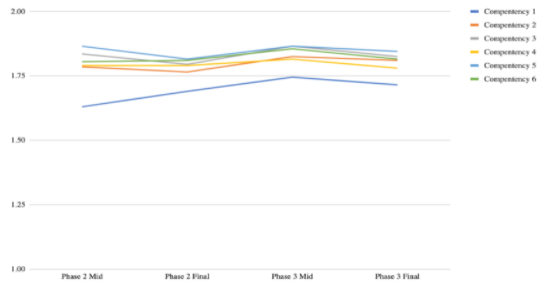
Figure 10: Cohort 1 Mid- and Final-Evaluation from 3rd semester of Professional Competencies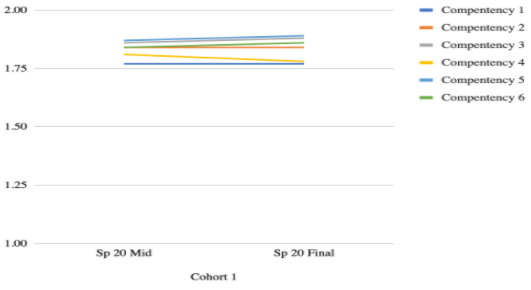
Figure 11: Cohort 2 Mid- and Final-Evaluation from 2nd and 3rd semester of Professional
Competencies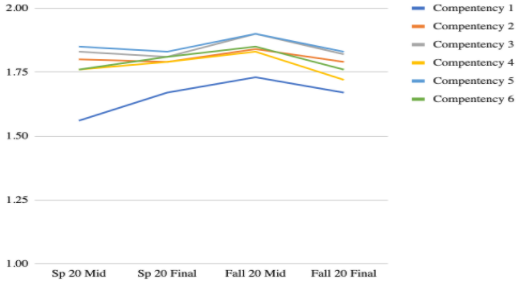
Figure 12: Cohort 3 Mid- and Final-Evaluation from 2nd and 3rd semester of Professional
Competencies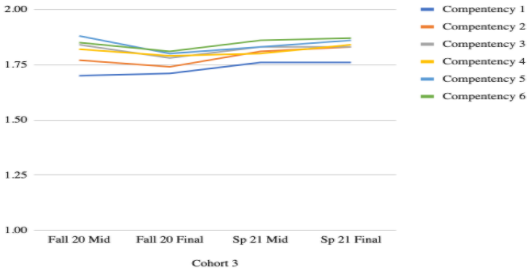
Figure 13: Cohort 4 Mid- and Final-Evaluation from 2nd semester of Professional Competencies
Link to Full Dataset: Field Placement Mid-Semester Eval Data
Interpretation of Data:
Data collected over the past 3 years demonstrate that upon completion of the multiple
subject program, over 96% of candidates did not score a 0 (Disagree) in any of the
6 competencies during their final evaluation in their 2nd or 3rd phase of the Multiple
Subject Program.
We displayed the data in a panel chart to identify patterns across cohorts for the 6 professional educator competencies. From this data, we have identified Competencies 3, 5, and 6 as areas that our teacher candidates are successfully developing over the course of the program. These competencies include: (3) teaching candidates accepting criticism and suggestions, (5) teaching candidate respects the attitudes and opinions of others, & (6) teaching candidate demonstrates caring, support, acceptance, and fairness toward all students, families, and colleagues.
From this data, we can determine that Competency 1, teacher candidate taking initiative, consistently has the lowest overall score for the 4 cohorts evaluated. Competencies 2 & 4 are also consistently scored lower than Competencies 3, 5, & 6. These competencies are (2) teaching candidate demonstrates professionalism, including the responsible use of social media and other digital platforms and tools, and (4) teaching candidate is punctual and prepared.
Next Steps:
Based on analysis of the 6 Professional Competencies, we can conclude that our teacher
candidates demonstrate the ability to accept constructive criticism and are respectful,
kind and caring towards others. These are all positive attributes that our candidates
display. On the other side of the spectrum, we can also conclude that our teacher
candidates would benefit from some professional development around professional behaviors
including taking initiative, using social media professionally, and being punctual
and prepared when arriving at work.
Looking across our findings from the candidates’ scores on the indicated Fieldwork Observation Rubric, their responses to the CSU Completer survey, their responses to the Disposition Survey, and the qualitative analysis of their fieldwork placement contexts indicates to us that we need to do additional work to (1) support candidates in developing their ability to leverage student background, family, and language skills to utilize student strengths to support student success; and (2) emphasize the importance of professional behaviors throughout their fieldwork experience, including but not limited to preparedness and punctuality.
In order to address these areas of need for our teacher candidates:
- Through cross analysis of the CSU Completer Survey and the fieldwork placement contexts, we determined that the completers of the Multiple Subject Program would benefit from work centered around their students’ lived experiences. While the curriculum is designed in the first phase of the program to facilitate discussions around children, families, and communities, a more specific emphasis will be placed on the use of language and perceptions during the second and third phase of the program, and how that will influence teacher candidate engagement in the Community Context Assignment. Linguistic and Familial Wealth discussions and explicit instruction should be included in the Community Context assignment as a way to help students center the lived experiences of learners; this will influence the teacher candidate’s development and understanding around these important community concepts and how that may influence student outcomes and success. Additionally, support should be provided for candidates who feel they are not adequately prepared for classroom instruction by the end of the program. This provides an increased opportunity to focus our inquiry courses in a way that continues to allow teacher candidates to investigate the professional practices that they feel require more preparation during their final phase of classroom and clinical practice.
- With regards to the teacher candidate’s development of professional behaviors as indicated by the university coaches in their fieldwork placements, we intend to incorporate professional skill development throughout the program to address these areas of need as we see these behaviors essential to a successful career in a teaching position. We also intend to increase communication between faculty, coaches, and program administrators to identify these areas of need earlier in the program. By identifying students or cohorts who are struggling to incorporate these professional behaviors in their clinical practice, the program can provide support to reinforce behaviors necessary for successful teaching practices.
(a) Recommendations:
(i) Behaviors necessary for successful teaching practices explicitly stated at the
beginning of the teacher candidate’s clinical practice during a professional workshop
for all students entering clinical practice.
(ii)Add a 4th level on the continuum to assess professional behaviors; Disagree (0),
Somewhat disagree (1), Agree (2), Strongly Agree (3).
(iii)Professional behaviors assessed at disagree (0) by mentor or coach at midway
point of either semester will be put on an academic plan of assistance to support
growth in these areas.
(iv)Teacher candidates evaluated at disagree (0) or somewhat disagree (1) for any
of the 6 professional behavior items for both mid- and final-evaluation during the
second semester will be placed on an academic plan of assistance for during their
final semester of the program.
To evaluate our efforts in the area...
- We will create a program-wide rubric to evaluate and assess the deficit and asset-based language around students, language, and their families. The assignment and the rubric will also include a new section around student’s lived experiences, including linguistic and navigational wealth. With a program-wide rubric, faculty will be able to track growth of asset-based teacher candidate’s perceptions towards students and their families.
- We will edit and evaluate the current disposition survey that the students complete during their first semester of the multiple subject program to better address the current beliefs of the program of dispositions necessary to be a successful teacher. We will also include due dates for these surveys to get data that we can utilize to track their growth. We will also develop a tool for the university coaches to engage the teacher candidates with reviewing their disposition data so that a goal is set at the beginning of the semester and is reviewed during the coaching cycles throughout the semester.
- We will track student growth in the professional behaviors from the coaches and mentors perspectives over the course of the program to gauge effectiveness of the workshop and academic plans of assistance to support our students struggling in these areas.